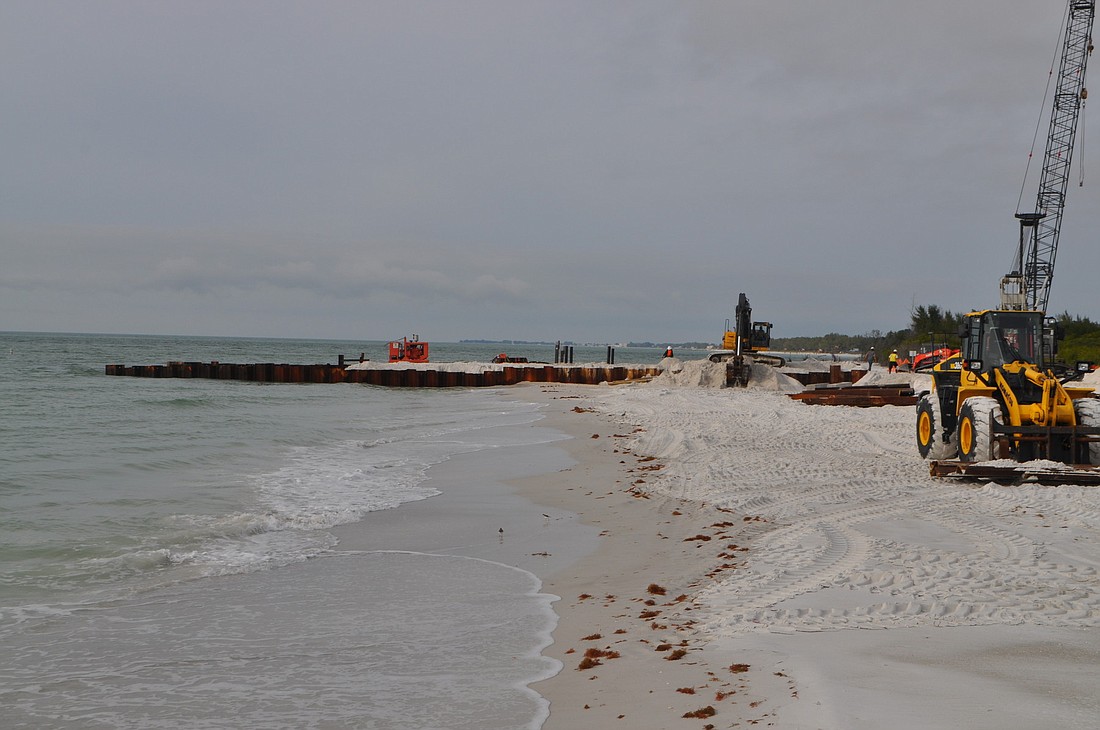- April 24, 2024
-
-
Loading

Loading

Jan. 31, 2014.
Longboat Key Public Works Director Juan Florensa remembers the date for two reasons: It was his 58th birthday, and the Department of Environmental Protection issued the town a Joint Coastal Permit for the town to build two groins on the north end to stop beach erosion — a permit that took approximately two-and-a-half years for the town to obtain.
“I remember that night, I had a martini when I got home,” Florensa said.
Nearly one year later, town officials, residents and beachgoers have a tentative reason to toast: Construction of the groins, which began in November, is moving according to schedule and could be completed by May in time for hurricane season.
The North Shore Road beach access is currently closed as eight to 10 workers on a given day build the first of two groins. They’ve constructed approximately 75 of 252 feet of the northernmost structure near 360 North condominium. After that structure’s completion, they’ll complete a 180-foot groin just to the south near Longbeach condominium.
The structures won’t just provide a place for beachgoers to bask in the sun. They will offer protection to 360 North and Longbeach condominiums, as well as providing a habitat for a wide array of shorebirds and other marine life. To obtain permits, the town had to show how construction would impact mangroves, sea turtles, manatees, shorebirds and other marine life.
The structures will look like fishing piers, and the land portion of the groins will be covered with sand.
If the groin’s sand-holding “teeth” wind up holding too much sand, teeth can be removed, and if they don’t hold enough sand, teeth can be added.
According to Florensa, the process of building the groins is similar to the one the town went through in 2010, when two groins were built at the Islander Club.
“The thing that’s more difficult is that this is a well-known, very used public beach access, whereas at the Islander Club, there isn’t a public beach access,” Florensa said. “The difficult part is crowd control. Most people understand, but some people don’t abide by the signs.”
Whether the town meets its goal of completing the structures by May depends on Mother Nature. Although summer is known as storm season because of the possibility of tropical storms and hurricanes, storms are actually more frequent during winter months.
If the project is not completed by May 1 — the start of turtle-nesting season — the town can relocate nests with help from Mote Marine Laboratory, although Florensa does not expect turtles to nest in the construction area. Work on the first groin will be completed by then, and the second groin is being constructed in an area where no beach remains.
